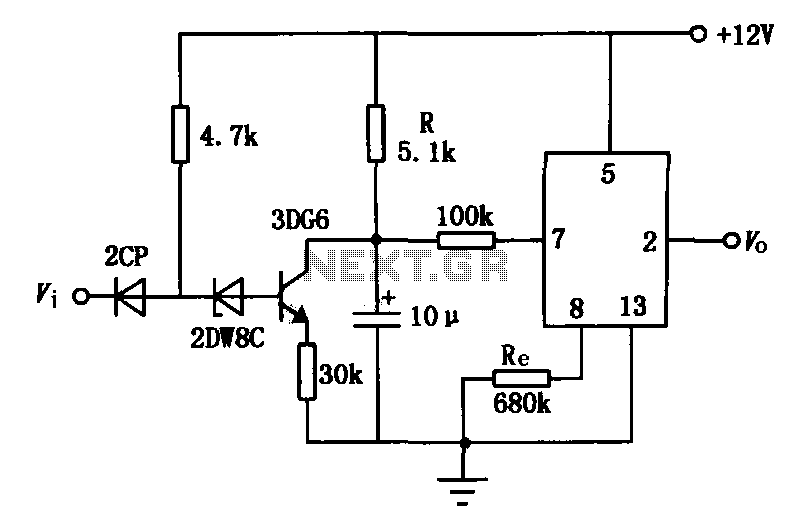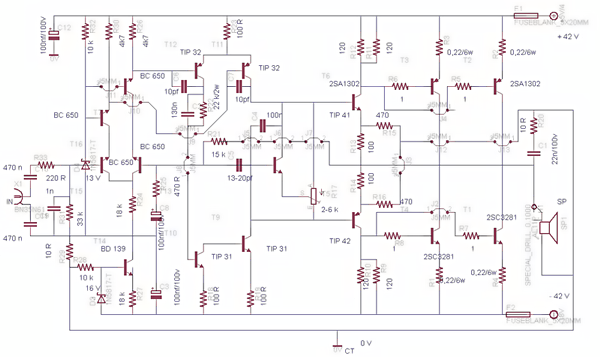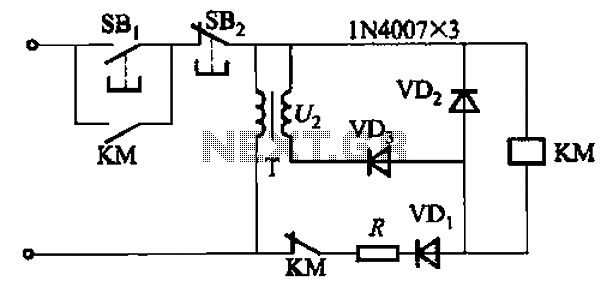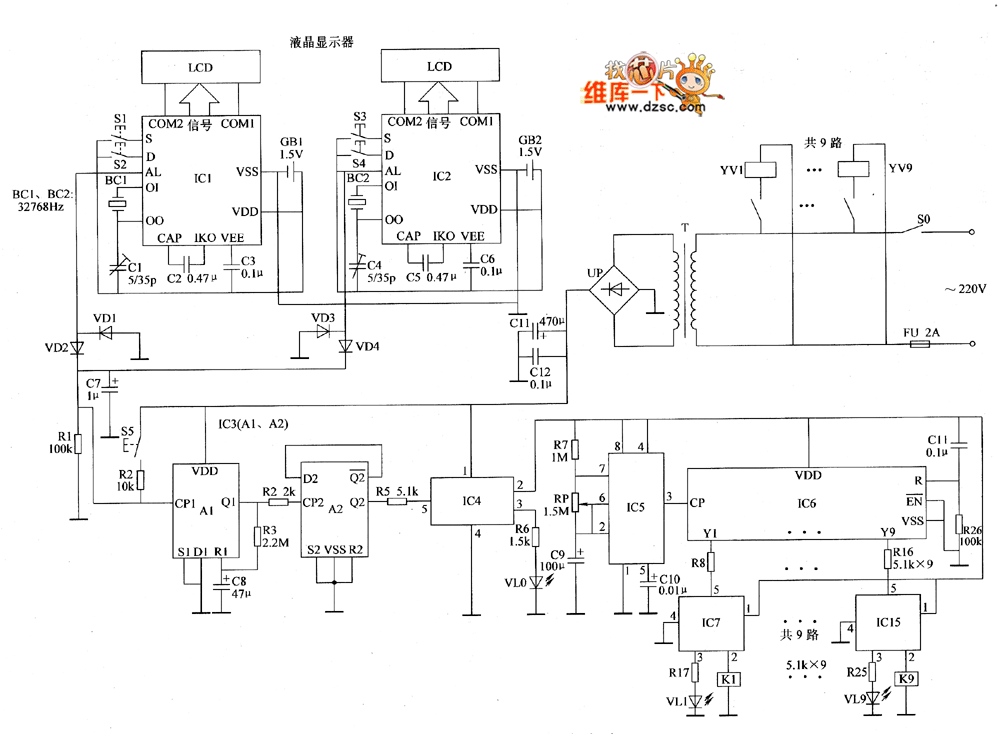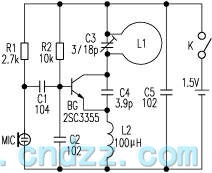
FM adaptor circuit for car stereo
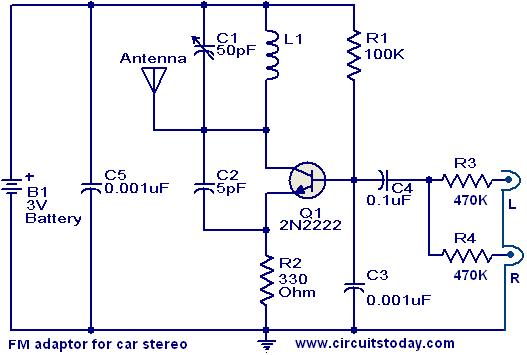
This compact FM adapter circuit, when connected to the audio output of a cassette player or iPod, enables the user to listen to their favorite music through a car stereo. It is particularly useful for vehicles that lack an auxiliary input socket. The circuit functions as a short-range FM transmitter, utilizing a low-power NPN transistor, specifically the 2N2222. The tank circuit, consisting of inductor L1 and capacitor C1, generates the necessary oscillations at the collector of the transistor Q1. Capacitors C4 and resistors R3 and R4 serve to mix the stereo output from the audio player or iPod. The emitter resistor R2 contributes to circuit stability and limits the collector current, thereby extending battery life.
This FM adapter circuit is designed to facilitate audio transmission from portable devices to car stereos, enhancing the listening experience for users without direct auxiliary input options. The core of the circuit is the 2N2222 NPN transistor, which operates as the primary amplifying component. The tank circuit, formed by inductor L1 and capacitor C1, is crucial for generating the radio frequency oscillations necessary for FM transmission. The resonant frequency is determined by the values of L1 and C1, and careful selection of these components can optimize performance for specific frequency bands.
The mixing stage of the circuit is achieved through the combination of capacitors C4 and resistors R3 and R4, which blend the audio signals from the device into a format suitable for transmission. This mixing process ensures that the sound quality remains high and that stereo signals are preserved, providing an enjoyable listening experience.
Stability in the circuit is maintained by the emitter resistor R2, which plays a dual role. It not only stabilizes the transistor's operation but also limits the current flowing through the collector. This current limitation is vital for prolonging battery life, especially in portable applications where power efficiency is a priority.
Overall, this FM adapter circuit represents an effective solution for integrating modern audio devices with older car stereo systems, providing flexibility and convenience for users seeking to enjoy their music on the go.With this compact FM adaptor circuit plugged into the audio out of your cassete player or i Pod out put, you can listen your favorite music on your car stereo. This circuit is very useful if your car stereo doesnot have an auxillary in socket. The circuit is nothing buy an short range FM transimitter. The FM transmitter circuit is based on low power NPN transistor 2N2222. The tank circuit consisting of L1 & C1 producess the necessary oscillations at the collector of Q1. The capacitance C4, resistance R3 & R4 performs the function of mixing the stereo out put from theaudio player or i-Pod. The emitter resistance R2 provides sufficient stability to the circuit. It also limits the collector current to increse the battery life. 🔗 External reference
This FM adapter circuit is designed to facilitate audio transmission from portable devices to car stereos, enhancing the listening experience for users without direct auxiliary input options. The core of the circuit is the 2N2222 NPN transistor, which operates as the primary amplifying component. The tank circuit, formed by inductor L1 and capacitor C1, is crucial for generating the radio frequency oscillations necessary for FM transmission. The resonant frequency is determined by the values of L1 and C1, and careful selection of these components can optimize performance for specific frequency bands.
The mixing stage of the circuit is achieved through the combination of capacitors C4 and resistors R3 and R4, which blend the audio signals from the device into a format suitable for transmission. This mixing process ensures that the sound quality remains high and that stereo signals are preserved, providing an enjoyable listening experience.
Stability in the circuit is maintained by the emitter resistor R2, which plays a dual role. It not only stabilizes the transistor's operation but also limits the current flowing through the collector. This current limitation is vital for prolonging battery life, especially in portable applications where power efficiency is a priority.
Overall, this FM adapter circuit represents an effective solution for integrating modern audio devices with older car stereo systems, providing flexibility and convenience for users seeking to enjoy their music on the go.With this compact FM adaptor circuit plugged into the audio out of your cassete player or i Pod out put, you can listen your favorite music on your car stereo. This circuit is very useful if your car stereo doesnot have an auxillary in socket. The circuit is nothing buy an short range FM transimitter. The FM transmitter circuit is based on low power NPN transistor 2N2222. The tank circuit consisting of L1 & C1 producess the necessary oscillations at the collector of Q1. The capacitance C4, resistance R3 & R4 performs the function of mixing the stereo out put from theaudio player or i-Pod. The emitter resistance R2 provides sufficient stability to the circuit. It also limits the collector current to increse the battery life. 🔗 External reference
